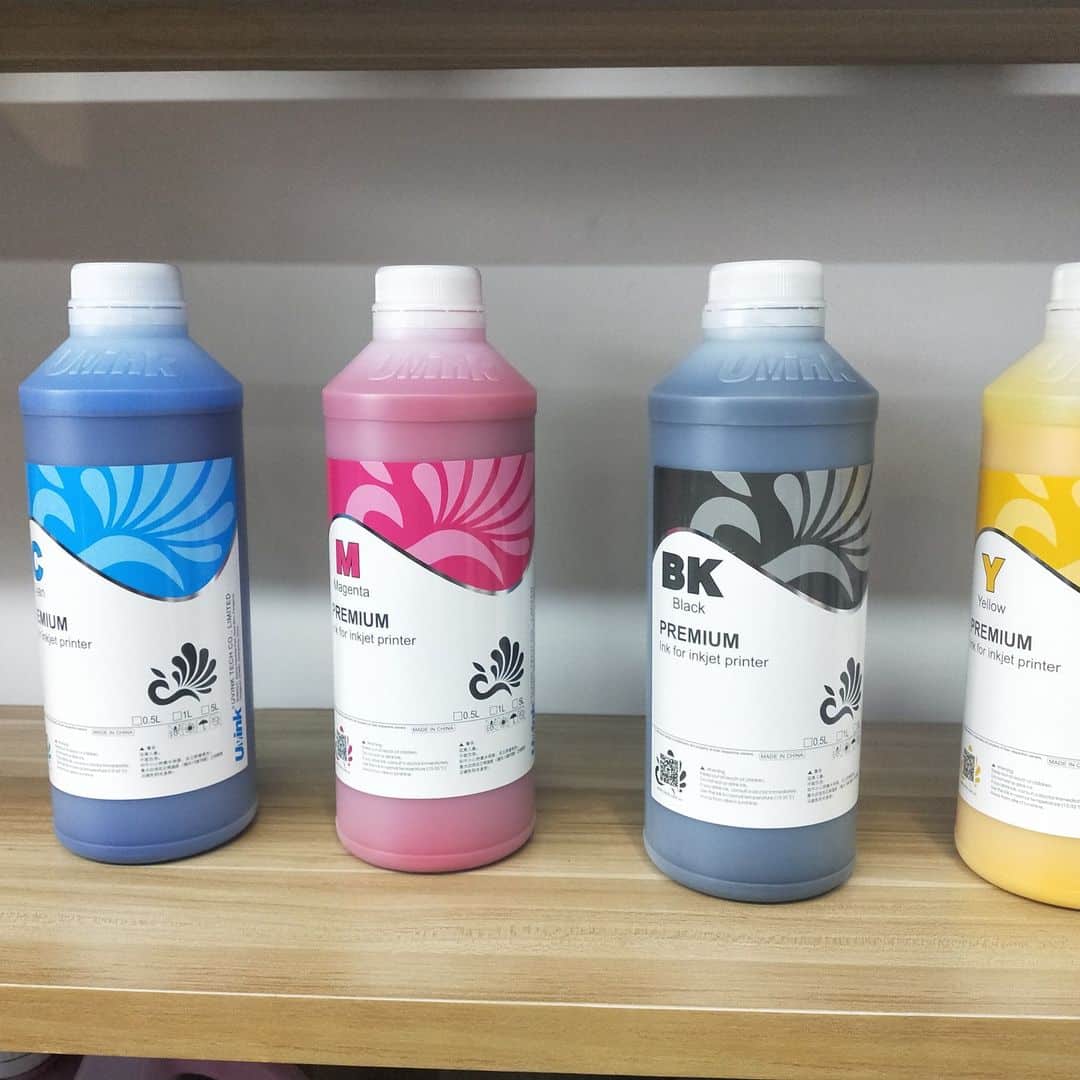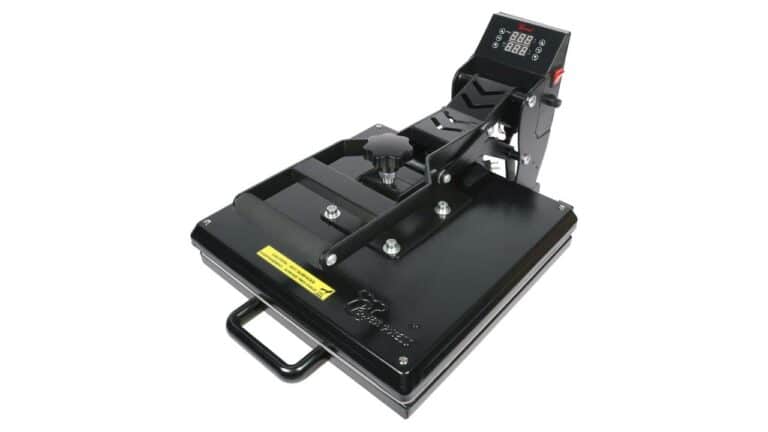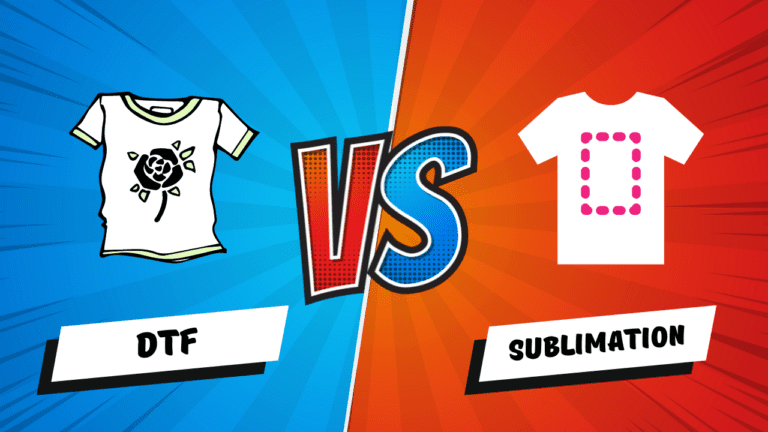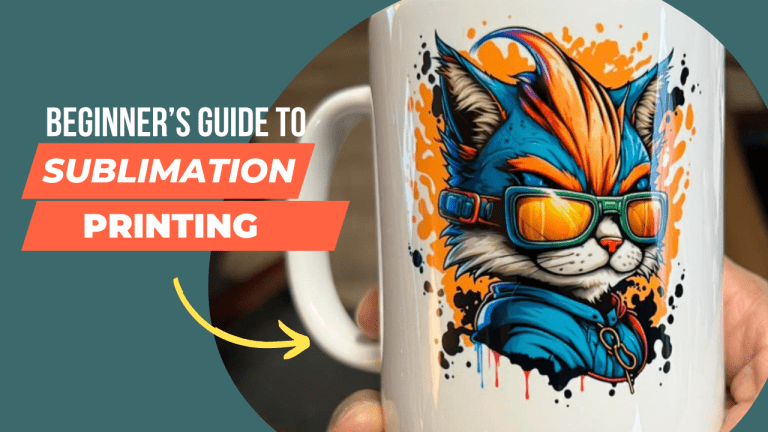Eco Solvent Ink vs Sublimation Ink: which is best for your printing?
If you are looking to make it big as a sublimation or a DIY printing artist then you may be weighing up eco solvent ink vs sublimation ink. Finding the best ink for your needs and printer is crucial. While there are quite a few options available, including the likes of aqueous dye, UV-curable, and more, two of the most popular variants include the standard sublimation ink and the Eco-solvent ink.
It is crucial to clearly understand the differences between sublimation ink and Eco-solvent ink, as they only work with specific printing setups. so if you are at a crossroads with your printing, don’t worry, we will cover all the key factors behind each ink type below.
What is eco solvent ink?
Eco-solvent ink is what the name suggests. It comprises a solvent with infused pigments that lend color to the substrates.
Some of the more popular examples include the UltraChrome GS3 from Epson and the Eco-Sol Max from Roland. These ink variants are compatible with a wide range of printers from Epson, Mimaki, and Roland.
No products found.
It is important to note that eco-solvent ink variants work best with eco-solvent inkjet printers, where ink is applied directly onto the surface of the material. The role of the solvent is to soften the material, and it evaporates, letting the pigments bond with the substrate. They have temperature-specific needs and therefore come with built-in heating setups.
Now that the concept is out of the way let us quickly look at the advantages and disadvantages of using eco-solvent ink:
What is an eco solvent printer?
If you have plans of designing and printing vehicle wraps, decals, wall graphics, and any kind of outdoor signage, eco-solvent makes quite a compelling case. And if you are still not sure as to which printers would fit, the likes of Epson SureColor S-Series, Mimaki JV150 Series, and even the SOLJET Pro 4 XR-640 from Rolan fit in quite well.
Some of the best Epson printers for sublimation can be converted for eco-solvent inks also.
- Epson printing system is designed to be used exclusively with Epson Genuine Cartridges. Use of non-genuine ink could cause damage not covered under the printer’s ltd. wnty.
- Save up to 90 percent on ink with low-cost replacement bottles vs. ink cartridges (1) — about 1 cent per color ISO page vs. about 20 cents with cartridges (1).
- Epson EcoTank is the BestSelling Supertank Printer
- Versatile paper handling — print up to 13″ x 19″ through rear feed; copy and scan up to 8. 5″ x 11″ (via the scan bed) or 8.5″ x 14″ (via the ADF).
- Print for up to 2 years with each included or replacement ink bottle set (2) — each set includes enough ink to print up to 7,500 pages black / 6,000 color (3); you could save dollars 620 with each one (1).
Sublimation ink
Sublimation ink is what works best with sublimation printers. These are water-based ink variants, perfect for dye-sublimation printing. Coming to usage, the lifecycle of sublimation ink starts at the printer, moves to the transfer paper, and eventually infuses with the substrate when you apply heat and pressure.
No products found.
Now that you have a refresher as to how sublimation ink works, here are the pros and cons of using it:
Color reproduction is arguably the most vibrant compared to any other type of DIY printing activity.
The print permanence is exceptional. Factors like light, UV exposure, and abrasion hardly do anything to the prints.
- The printed surface doesn’t give out any kind of tactile feel, making the artwork look all-natural and a part of the substrate itself.
Sublimation ink is good, but it has a narrower range of compatible substrates compared to eco-solvent inks.
- Setting up the entire sublimation printing realm is cost-intensive. Unlike the eco-solvent printers that have heat presses built-in, sublimation would require you to invest separately in heat presses and even transfer papers.
- Sublimation, due to the number of steps and the need for accurate temperature control, feels tricker than other printing jobs.
Therefore, if you prefer print jobs where the substrate is more like a polyester-specific material like sportswear, home textile, or anything else, using sublimation ink makes sense. You can even use this printing approach for promotional items like mugs and mouse pads.
Eco solvent ink vs sublimation ink
By now, you should have a fair idea of how each ink variant works. Still, I have prepared a detailed list across different parameters to help you make an informed decision:
Print surface compatibility
Eco-solvent ink solutions are compatible with more substrates or print surfaces as compared to sublimation ink variants. The former scores highly when it comes to printing on vinyl, paper, and even canvas. Sublimation ink works rather well or best with polyester-backed surfaces.
Print longevity
Both ink types show commendable durability, albeit in different capacities. For instance, eco-solvent prints are scratch, water, and UV resistant, whereas sublimation prints are crack, fade, and even peel resistant.
Color vibrancy
Sublimation ink solutions win this parameter, hands down. They bring in colors way better than their eco-solvent counterparts.
Production speed
Sublimation ink dries faster and therefore helps get your DIY project up and running in virtually no time. Eco-solvent printing can be time-intensive. This is because eco-solvent ink is a surface print, meaning it sits on top of the material. Sublimation ink, however, dyes the fabric or substrate, creating a smooth and permanent print.
Environmental impact
It goes without saying that eco-solvent ink solutions are way greener compared to their sublimation counterparts. This type of ink is considered less harmful than traditional solvent ink, however, they still contain volatile organic compounds (VOCs) that can require proper ventilation when printing.
Sublimation ink doesn’t carry the same “eco” title, however, this type of ink is also considered environmentally friendly. the heat transfer process for sublimation has its own energy consumption to take into consideration.
Market demand and popularity
Eco-solvent ink solutions are primarily used for outdoor prints and are more useful and popular commercially. However, if you are strictly going by the DIY capabilities, sublimation ink takes the cake.
Adjoining costs
Eco-solvent printing is more cost-effective as there is no need for lofty hardware. With sublimation ink and printing solutions, additional heat press and paper are needed, pushing the costs higher.
Both sublimation and eco-solvent ink solutions have their own place in the printing world. The one you end up choosing depends on your personal expertise and professional needs.
FAQs
It isn’t advisable to use eco-solvent ink in your sublimation printer. Even if you do, the printer head can get clogged, and the imprints will surely be subpar.
There is no ink that can be deemed universally better. For better vibrancy and color reproduction, you can go with dye-sublimation ink solutions, whereas eco-solvent ink variants are greener and are compatible with a wider range of substrates.
No, sublimation ink uses water as the base and is loaded with specialized dyes for handling dye-sublimation. Solvent inks, like eco-solvent, have specialized formulations that carry substrate-bonding pigments.
You can use eco-solvent ink for regular printing, provided your requirements primarily concern paper, canvas, and vinyl printing. However, if you want ink solutions for daily workspace-specific printing, eco-solvent might not be the answer.
The longevity of eco-solvent ink solutions depends on the quality of the ink, the type of substrate you plan on using, and even environmental factors. The best case scenario is three years to 5 years before the design starts to fade out.
Final words
Now you know the various pros and cons of eco solvent ink vs sublimation ink you should be able to take the next step, decide which one suits your printing needs, and get to what you love!








